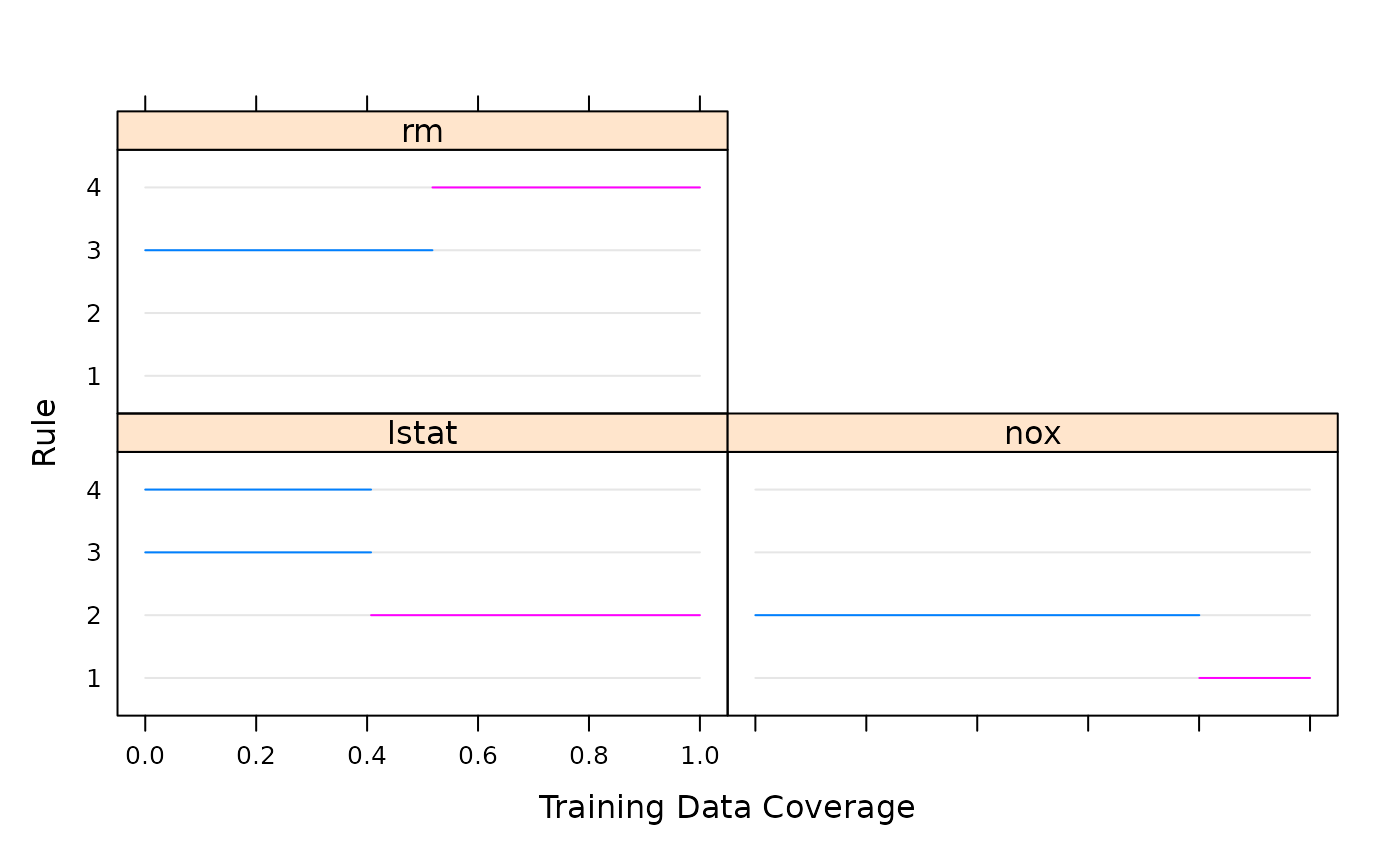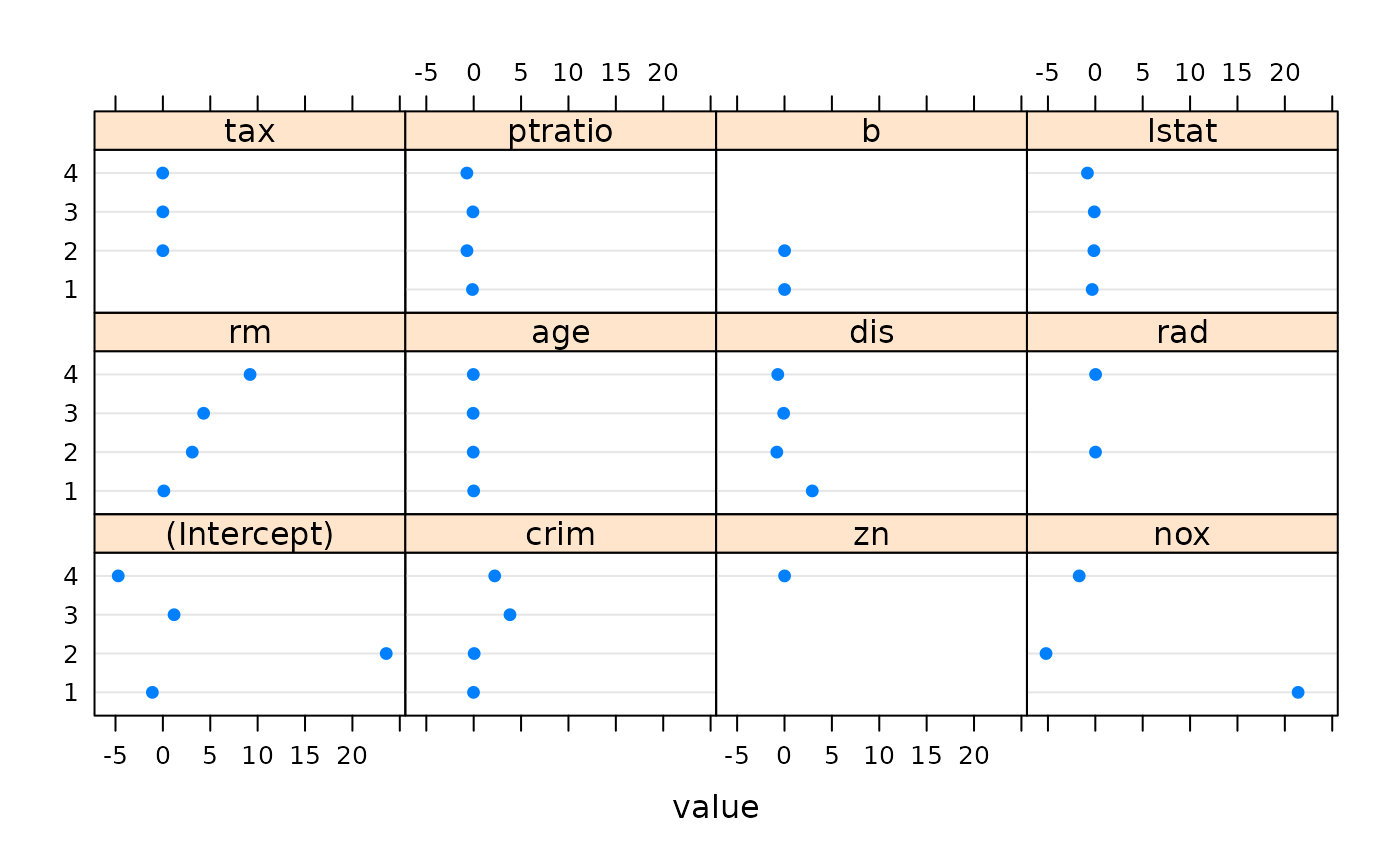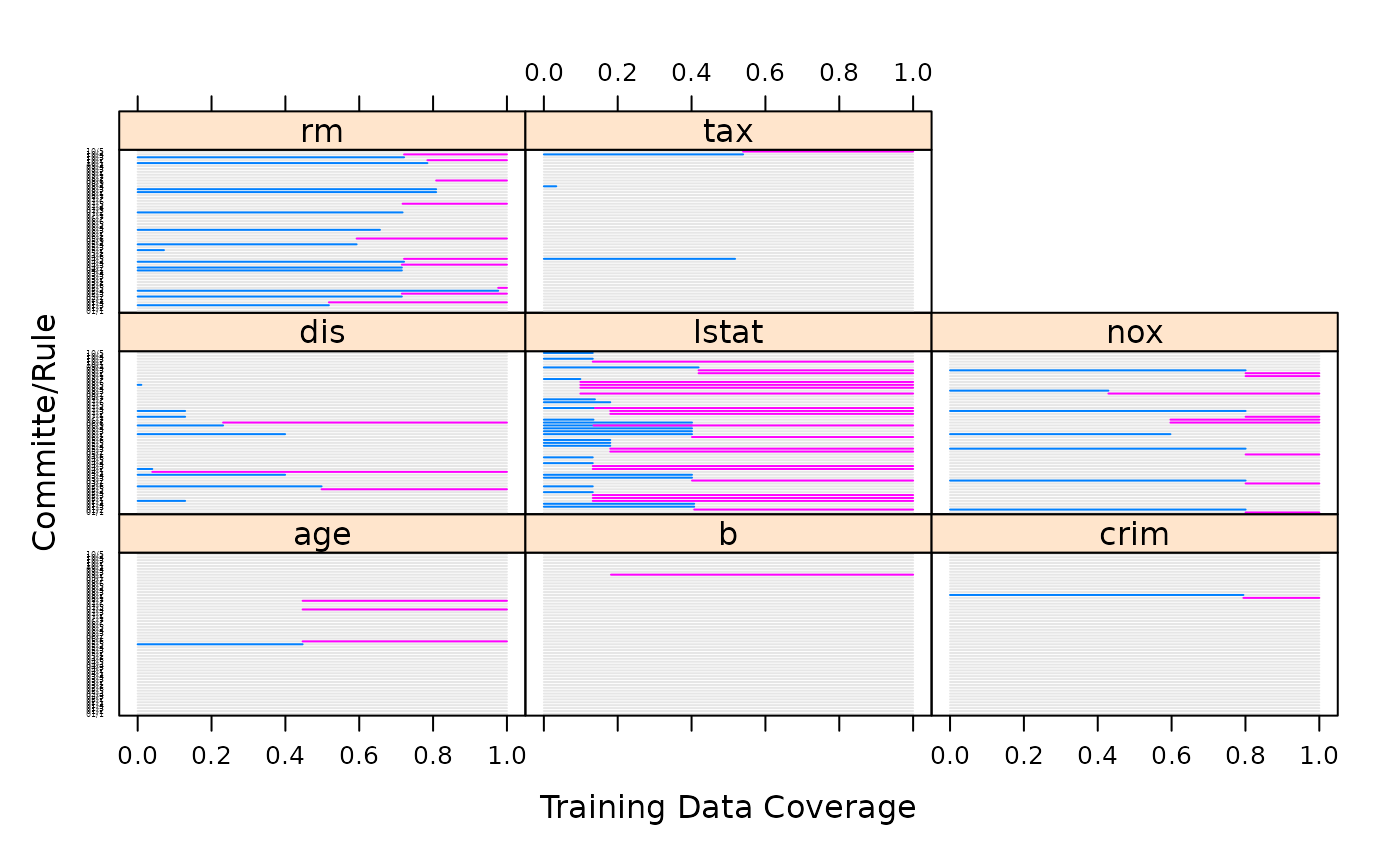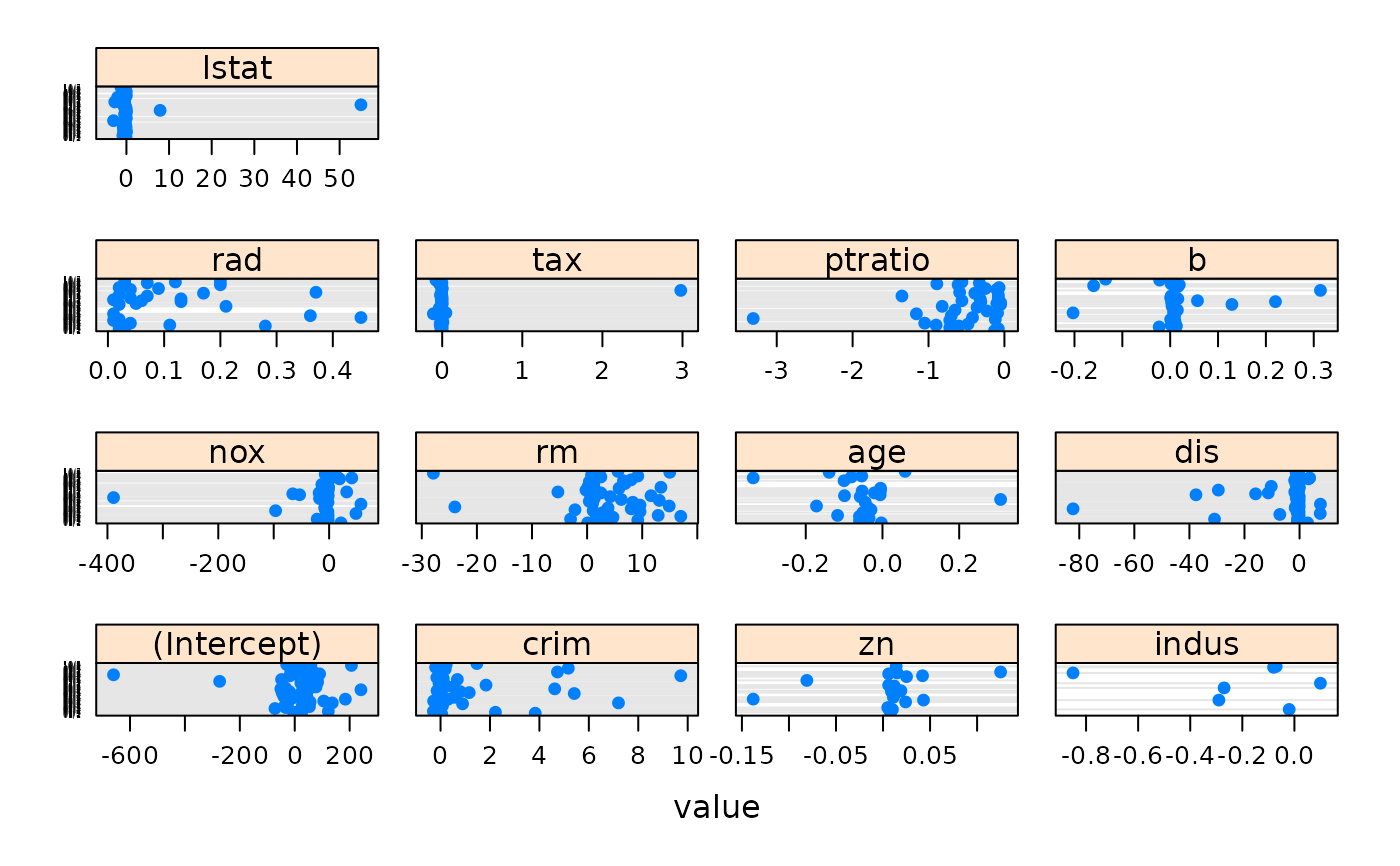Lattice dotplots of the rule conditions or the linear model
coefficients produced by cubist() objects
# S3 method for class 'cubist'
dotplot(x, data = NULL, what = "splits", committee = NULL, rule = NULL, ...)Arguments
- x
a
cubist()object- data
not currently used (here for lattice compatibility)
- what
either "splits" or "coefs"
- committee
which committees to plot
- rule
which rules to plot
- ...
options to pass to
lattice::dotplot()
Value
a lattice::dotplot() object
Details
For the splits, a panel is created for each predictor. The
x-axis is the range of the predictor scaled to be between zero
and one and the y-axis has a line for each rule (within each
committee). Areas are colored as based on their region. For
example, if one rule has var1 < 10, the linear for this rule
would be colored. If another rule had the complementary region
of var1 <= 10, it would be on another line and shaded a
different color.
For the coefficient plot, another dotplot is made. The layout is the same except the the x-axis is in the original units and has a dot if the rule used that variable in a linear model.
References
Quinlan. Learning with continuous classes. Proceedings of the 5th Australian Joint Conference On Artificial Intelligence (1992) pp. 343-348
Quinlan. Combining instance-based and model-based learning. Proceedings of the Tenth International Conference on Machine Learning (1993) pp. 236-243
Quinlan. C4.5: Programs For Machine Learning (1993) Morgan Kaufmann Publishers Inc. San Francisco, CA
See also
Examples
library(mlbench)
data(BostonHousing)
## 1 committee and no instance-based correction, so just an M5 fit:
mod1 <- cubist(x = BostonHousing[, -14], y = BostonHousing$medv)
dotplot(mod1, what = "splits")
 dotplot(mod1, what = "coefs")
dotplot(mod1, what = "coefs")
 ## Now with 10 committees
mod2 <- cubist(x = BostonHousing[, -14],
y = BostonHousing$medv,
committees = 10)
dotplot(mod2, scales = list(y = list(cex = .25)))
## Now with 10 committees
mod2 <- cubist(x = BostonHousing[, -14],
y = BostonHousing$medv,
committees = 10)
dotplot(mod2, scales = list(y = list(cex = .25)))
 dotplot(mod2, what = "coefs",
between = list(x = 1, y = 1),
scales = list(x = list(relation = "free"),
y = list(cex = .25)))
dotplot(mod2, what = "coefs",
between = list(x = 1, y = 1),
scales = list(x = list(relation = "free"),
y = list(cex = .25)))
